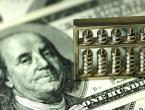EUR/USD
1.15495
-0.303%
Gold
3432.27
1.346%
Oil
71.442
5.766%
USD/JPY
143.932
0.321%
GBP/USD
1.35700
-0.316%
GBP/JPY
195.322
0.035%
On June 15, Sabah Numan, spokesman for the Commander-in-Chief of the Iraqi Armed Forces, issued a statement on the evening of the 14th local time, saying that the Iraqi government firmly rejects any violation of Iraqi airspace by any party and firmly opposes Israels use of Iraqi airspace to launch military attacks on Iran or other neighboring countries. The statement stressed that such actions are completely contrary to the Iraqi Constitution, blatantly violate Iraqi sovereignty, violate the basic principles of international law, and have a negative impact on regional stability and peace. The statement also urged the United States to assume its responsibilities and prevent Israeli warplanes from crossing Iraqi airspace again and launching attacks. The Iraqi government promised to exercise maximum restraint and hoped to create opportunities for peaceful resolution of the crisis through diplomatic and political means.Israeli media reported that multiple missiles hit targets in the latest round of Iranian attacks.On June 15, local time, the Islamic Revolutionary Guard Corps of Iran issued a statement saying that in order to counter Israels aggression, the Islamic Revolutionary Guard Corps of Iran continued to advance the "Real Commitment-3" operation, and Israels fighter jet fuel production facilities and energy supply centers were attacked by a series of missiles. The statement also warned Israel that if Israels aggression is not restrained, the subsequent actions taken by the Islamic Revolutionary Guard Corps will be more intense and the scope of impact will become more extensive.June 15, according to Iranian media reports on the 14th, two refineries in Bushehr Province in southern Iran were attacked by Israeli air strikes that day, and some facilities exploded and caught fire. The fire has been brought under control. According to Irans Tasnim News Agency, a set of equipment in the 14th phase of the South Pars Refinery project caught fire after being attacked, and the rest of the equipment is still operating normally. Natural gas production in this phase of the project is still continuing. Another attack occurred at the Fajar Jam Refinery. The report said that the Iranian National Gas Company is conducting further investigations into the incident. The Islamic Republic News Agency of Iran quoted officials from the Bushehr Province Crisis Management Department as saying that the fires at the two facilities were brought under control on the evening of the 14th, and no casualties were reported. According to Israels Haaretz, this is the first time Israel has attacked Irans energy infrastructure, and it is the first time that an Iranian refinery has been attacked since the Iran-Iraq War in the 1980s.According to Shana, the official website of the Iranian Ministry of Petroleum: The Tehran refinery is intact and operations are uninterrupted.











